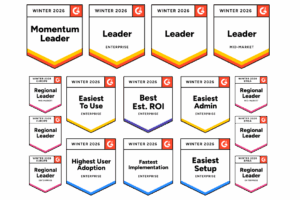Start Smart, Then Scale: From Suggested Matching to AI MatchAssist in Adra Matcher
Blog post
Share
If you’re an accounting leader, you’ve likely invested in automation but still spend too much time chasing exceptions. Rules can get you 75-90% of the way there, but that last mile of exceptions – edge cases, timing differences, one-offs – still eats into your close. Many teams tell us they know there are smarter rules they could create, but with a never-ending workload and a shortage of accountants already, they just don’t have the time to constantly tune and refine them.
This blog outlines a practical journey to improve matching using Adra Matcher by Trintech: start with automated matching, embrace Suggested Matching for fast wins, then take the next step with Adra Matcher’s MatchAssist – AI that proposes and creates matching rules for you to continuously improve without the administrative lift.
Step 1: Establish a strong automation foundation with Adra Matcher
Adra Matcher automates high‑volume, multi‑way matching and provides audit‑ready workflows to drastically reduce the number of transactions you need to investigate. Trintech customers use predefined and customized rules to automatch even the most complex scenarios, cutting manual reviews and focusing attention where it matters most. In fact, most Adra Matcher users see 90+% auto-matched transactions, while also logging actions in an audit‑ready format.
Step 2: Embrace Suggested Matching for the “almost right” cases
So, how do you close the gap on those few remaining exceptions? Even with well‑built rules, some items fall just outside your thresholds: the date is two days off, the store number is transposed, or a reference field is inconsistent. Adra Matcher’s Suggested Matching feature scans exceptions, highlights close matches that don’t meet your current criteria exactly, and then lets your team accept or dismiss them with a click. You stay in control, speed up exception clearing, and avoid an investigation for every small variance.
Typical quick wins:
- Minor date variances (e.g., settlement delays, weekend postings)
- Store/branch reference inconsistencies (e.g., “0123” vs “123”)
- Description/Payee variants (e.g., “Acme Inc.” vs “Acme, LLC”)
- Multi‑item offsets where one side is split across several transactions
Step 3: Go further with MatchAssist AI that suggests rules
While Suggested Matching speeds up the work today, MatchAssist can help you do less of it tomorrow. MatchAssist is an AI feature that detects match patterns in your unmatched transactions and historical activity – surfacing repeatable logic you’re likely missing. Instead of proposing suggested matches, MatchAssist takes it a step further, proposing new matching rules based on those patterns that you’re not currently using. If you’d like to accept the new rule, you can create it directly in the UI with no scripting. It even shows how many additional items you could be matching if you put the rule in place. Using AI to continuously evaluate rule efficacy keeps your library healthy so you can sunset poor performing rules, add new ones, and keep increasing your automatch percentage.
Why leaders like it
We’ve heard you – there aren’t enough hours in the day or people on staff to stay ahead. Although teams recognize the value of automation, many don’t have time to continually evaluate and refine rules. It can sometimes feel faster to manually match exceptions than to take the time to write a new rule – keeping you stuck in an endless loop of manual matches that could be getting auto-matched if a rule was in place. MatchAssist removes that trade‑off, giving you continuous improvement without constant administration needs.
And because data is inevitably constantly changing, MatchAssist keeps up with it too – proposing new, evolving rule updates that you can implement yourself in real-time without needing to bring in professional services.
Importantly, it keeps people in the loop. You retain final approval, and every AI-generated and accepted rule is tracked for audit and change management. It’s AI that’s designed for control-minded teams – suggestions are never auto-enforced, with your team reviewing, approving, and publishing.
Measure what matters (and celebrate the time you get back)
Measuring KPIs turns automation from a one‑time project into a managed, continuously improving process. They quantify the value you’re getting (hours back, faster close), prove control effectiveness (override and exception trends), and give you the audit story behind every rule change. Track these before and after implementing Adra Matcher to quantify impact on the business, and see how they change as your rules continue to improve:
- Auto‑match rate (by volume and value)
- Exception backlog and age of open exceptions
- Manual touches per exception
- Time‑to‑resolve and days‑to‑close
- Rule efficacy and acceptance rates
- Sunset rate of under‑performing rules / rules not being used
Learn more by downloading our infographic Rethinking Finance KPIs for the AI Era.
Harness the power of AI to get time back—and make time count.
At the end of the day automation is about getting back time so your teams can apply it where it matters—policy, analysis, and decision support. Even time working on career development and other skills that will bring value back to the business. Start with Adra’s powerful matching and Suggested Matching to capture immediate value. Then let MatchAssist accelerate your rule evolution—safely, visibly, and continuously.
If you’d like to see how this would look with your data and processes, ask your Trintech team for a personalized walkthrough of Adra Matcher.
Written By: Elizabeth Connors


